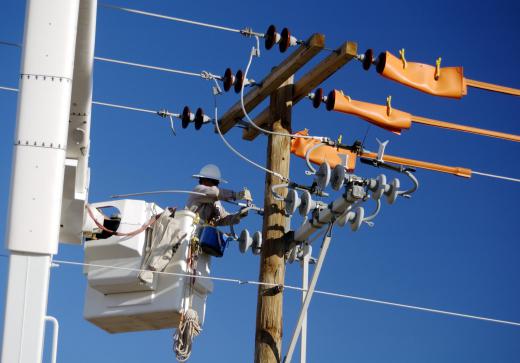A transformer is a magnetic device that transfers an electrical current from one power circuit to another. It works solely with current that continually changes levels and is most often used with alternating current (AC). It is not typically used with direct current (DC) power. Transformers can be large or small and may be anything from a part of household electrical equipment to a big device that is housed in a large container within a power station. A buck-boost transformer is a type of this transformer that alters the voltage of the current it transmits either up or down, according to the specific need.
To boost power means to increase it, so in boost mode the transformer is capable of increasing the input voltage. To buck power means to decrease it, so power that is coming into the transformer at too high a level will be output at a lower voltage. In either case, the change is generally not large, typically less than 20% or so.

The main purpose of a buck-boost transformer the adjustment of incoming current to an appropriate level for operation of devices that require a specific voltage. Such items include motors, compressors, specialty lighting as well as any other applications in which a different voltage level than that provided by the main power line is necessary. Depending on the requirement, the transformer will either boost the power up to the necessary level or drop it down to suit low voltage needs, such as that of low voltage lighting.
There are two common types of the buck-boost transformer. The first type is automatic, where the required voltage output has been established and the transformer adjusts itself to produce output that falls within that range. The alternate type is a static, or passive, transformer. This type of transformer will output a voltage that is consistently higher or lower than the input voltage by a specified amount.
A buck-boost transformer is sometimes used to adapt equipment designed to run on the electrical current system of one country to that of another. Since it only affects voltage and not any other factors, this adaptation may not work for all applications. It is important to check not only the incoming line voltage and the equipment’s required voltage, but also the operating amps of the equipment and the frequency to make sure the transformer will be able to produce the desired results.
